RGBW vs RGB: Color Options for Moving Head Lights
- RGBW vs RGB: Color Options for Moving Head Lights
- Why this matters for moving head DJ lights
- How RGB and RGBW generate color (basics for moving head dj lights)
- Color gamut and color accuracy: What to expect with moving head dj lights
- White rendering and CRI considerations for moving head dj lights
- Power efficiency and lumen output in moving head dj lights
- Color blending and smooth pastels for moving head dj lights
- Beam quality, lenses and effects: How LED choices interact with optics
- Cost and lifecycle considerations for moving head dj lights
- Practical comparison table for RGB vs RGBW moving head dj lights
- Which should DJs and clubs choose for moving head dj lights?
- Programming and control: DMX and personality options for moving head dj lights
- Integration with video capture and live streams — why RGBW helps moving head dj lights
- Maintenance, modularity and long-term service for moving head dj lights
- Real-world examples and recommended setups for moving head dj lights
- LQE — Manufacturer expertise and why it matters for your moving head dj lights
- How LQE’s capabilities align with RGBW vs RGB choices for moving head dj lights
- LQE product range and core competitive strengths
- Choosing the right fixture: practical checklist for moving head dj lights
- Summary recommendation for moving head dj lights
- Frequently Asked Questions (FAQ) about RGBW vs RGB for moving head dj lights
- Contact and product CTA
- Sources and references
RGBW vs RGB: Color Options for Moving Head Lights
Why this matters for moving head DJ lights
When specifying moving head DJ lights for clubs, tours, or event production, color performance is among the top decision factors. The choice between RGB and RGBW affects not only the richness of saturated colors but also the quality of white, pastel tones, power efficiency, and the number of fixtures you need. Understanding these differences helps lighting designers and buyers get predictable, high-impact results while controlling cost and setup complexity.
How RGB and RGBW generate color (basics for moving head dj lights)
RGB fixtures mix red, green and blue LEDs to create a wide range of colors through additive color mixing. RGBW adds a dedicated white LED (often warm or cool white), allowing the fixture to produce true whites and softer pastels without relying on RGB combinations. For moving head DJ lights, this difference changes how whites, skin tones on stage, and subtle color washes appear under dynamic movement.
Color gamut and color accuracy: What to expect with moving head dj lights
RGB can produce highly saturated colors, especially deep blues and greens, but struggles with accurate, neutral whites and delicate pastels. RGBW expands practical gamut in two ways: it adds a dedicated white for accurate white points, and it allows designers to blend white with colors for smoother desaturation. For live DJ shows where lighting moves rapidly and mixes with strobes and beams, RGBW often delivers more natural-looking whites and mid-tone colors that cameras and audiences prefer.
White rendering and CRI considerations for moving head dj lights
RGB-only mixing creates white by combining R, G, and B at full intensity, which often appears colder or slightly tinted because it's not a true white spectrum. RGBW fixtures include a true white LED which improves the perceived color temperature and can deliver higher color rendering for human faces and objects on stage. If you require accurate skin tones for performers or live-streamed DJ sets, choosing moving head dj lights with RGBW can reduce the need for additional front wash fixtures.
Power efficiency and lumen output in moving head dj lights
Because a dedicated white LED is generally more efficient at producing white light than mixing three colored LEDs, RGBW fixtures can produce comparable or higher white output at lower power consumption. In practice, this can mean fewer fixtures or lower electrical demand for similar perceived brightness during white washes—important for club installs and touring rigs where power budgets matter.
Color blending and smooth pastels for moving head dj lights
Pastels and subtle color transitions are challenging for RGB-only units because you rely on low-intensity mixing of R, G, and B, which can produce banding or muddy tones. RGBW improves smoothness and tonal range by adding a white channel to desaturate without changing hue dramatically. For moving head dj lights used in lounge sets, ambient moments, or cinematic stage design, RGBW provides a finer palette for creative programming.
Beam quality, lenses and effects: How LED choices interact with optics
The LED color system is only one part of a moving head's visual output. Beam quality — including lens design, optical homogeneity, and mixing chambers — affects how color blends across beams and washes. High-quality moving head dj lights pair well-engineered optics with their LED arrays to minimize color fringing and ensure uniform color across gobos and prisms. When comparing fixtures, evaluate both the emitter configuration (RGB vs RGBW) and the optical path.
Cost and lifecycle considerations for moving head dj lights
RGB fixtures are often less expensive upfront than RGBW because they have fewer LED channels and simpler driver electronics. However, total lifecycle cost should include factors like power consumption, the need for additional wash fixtures to achieve acceptable whites, and replacement/maintenance. Many buyers find RGBW fixtures deliver better long-term value for mixed-use venues and touring applications where accurate whites and versatile color options reduce the need for extra gear.
Practical comparison table for RGB vs RGBW moving head dj lights
| Attribute | RGB | RGBW |
|---|---|---|
| White reproduction | Mixed white; may appear tinted or cooler | Dedicated white LED gives truer whites and selectable color temperature |
| Pastel/smooth desaturation | Less smooth; risk of banding | Smoother pastels due to white channel |
| Saturated colors | Strong saturated hues | Comparable saturated hues; improved mid-tones |
| Power efficiency (white) | Less efficient for white output | More efficient producing white light |
| Cost (initial) | Generally lower | Generally higher |
| Best use cases | Clubs prioritizing saturated color effects | Multi-use venues, TV/studio, tours, applications needing accurate whites |
Sources informing this comparison are listed at the end of the article.
Which should DJs and clubs choose for moving head dj lights?
If your primary goal is high-energy saturated color and you rely heavily on strobe, beam, and gobo effects in small clubs, RGB fixtures remain a cost-effective and impactful choice. If you need versatility — reliable whites for illuminating performers, smoother pastels for ambience, or better camera-friendly output for livestreamed events — moving head dj lights with RGBW technology are often the smarter long-term investment.
Programming and control: DMX and personality options for moving head dj lights
From a control perspective, RGBW fixtures offer an extra channel (or channels) to manage the white independently, giving programmers more flexibility for cue design. Many modern moving head dj lights include onboard color macros and color temperature presets to simplify programming. When designing shows, use the white channel for fill and the RGB channels for hue shifts to avoid muddying whites.
Integration with video capture and live streams — why RGBW helps moving head dj lights
Camera sensors respond differently to mixed RGB white than to a true white spectrum, which can make RGB-only whites appear unnatural on video. RGBW units provide better white balance and reduce the need for post-production correction during live streams. For DJs who regularly stream performances, selecting moving head dj lights with RGBW will ease color grading and improve on-camera appearance.
Maintenance, modularity and long-term service for moving head dj lights
LED systems reduce the need for frequent lamp changes, but driver electronics and cooling systems still require care. RGBW fixtures may have slightly more complex electronics due to additional channels and color mixing control; choose reputable manufacturers and check warranties. Proper ventilation and firmware update support extend fixture lifespan, lowering total cost of ownership for moving head dj lights.
Real-world examples and recommended setups for moving head dj lights
- Small nightclub: 80–120W RGB or RGBW moving heads focused on saturated colors and energetic beam effects. If budget allows, prefer RGBW for improved whites during ambient moments.
- Medium venue/live music: Combine RGBW moving head wash lights for front and side lighting with RGB beam effects for aerial impact.
- Touring DJ rig: Prioritize RGBW hybrid moving heads for flexibility across different venues and for camera-friendly output.
LQE — Manufacturer expertise and why it matters for your moving head dj lights
LQE was founded in 2008 and is headquartered in Foshan, China. We are a professional OEM/ODM stage lighting equipment manufacturer specializing in the R&D, production, and sales of middle- and high-end digital stage lighting. Our production base covers an area of about 10,000 square meters, has the ability to produce 100,000 lighting fixtures annually, and has 80 national patents.
How LQE’s capabilities align with RGBW vs RGB choices for moving head dj lights
Combining engineering capacity and patent-backed product development, LQE designs moving head dj lights that reflect practical production requirements: precise optics, reliable LED arrays, and flexible control. The company's manufacturing scale and R&D experience allow for both cost-effective RGB models and feature-rich RGBW/multi-color hybrid units. If you need fixtures optimized for touring, broadcast, or nightclub installs, LQE's engineering resources make tailored options viable without sacrificing value.
LQE product range and core competitive strengths
Our range of stage lighting equipment is diverse, including various moving head lights and static lights, suitable for applications in theaters, music concert stages, studios, broadcasting, religious spaces, exhibitions, nightclubs, leisure venues, theme parks, and more. We are committed to providing first-class modern stage lighting equipment and exceptional customer service, all while maintaining the best value and cost-effectiveness in the industry. Our goal is to deliver high-quality, long-lasting lighting solutions that help stage designers and producers realize their vision.
Core product categories:
- Waterproof stage lighting — robust IP-rated fixtures for outdoor events and theme parks
- Beam moving head light — narrow, high-intensity beams for aerial effects
- Moving head hybrid light — multi-functional units combining beam, spot, and wash
- Moving head wash light — wide, even washes for front and side illumination
- Moving head profile light — precise framing and gobo projection for theater
- LED effect light — audience blinder, pixel, and strobe effects
- LED studio light & LED par light — for broadcast and stage background applications
- Lighting accessories — flight cases, cables, mounting hardware and controllers
Core competitive strengths: strong OEM/ODM capability, patent portfolio, large-scale production, and emphasis on optical performance and durability. These strengths enable LQE to deliver tailored moving head dj lights optimized for either RGB or RGBW color strategies depending on client needs.
Choosing the right fixture: practical checklist for moving head dj lights
Use this checklist when selecting fixtures for your venue or tour:
- Do you need accurate whites for performers or broadcasts? If yes, prefer RGBW.
- Are saturated aerial colors the primary objective? RGB alone may suffice.
- Is power consumption and fixture count constrained? Evaluate white-channel efficiency.
- Will you stream performances? Favor RGBW for camera-friendly output.
- Does your budget favor lower upfront cost or lower total lifecycle cost? Factor in long-term benefits of RGBW.
Summary recommendation for moving head dj lights
For versatile, multi-purpose applications — including live-streamed DJ sets, broadcast, theater, and venues that require accurate whites — RGBW moving head dj lights are generally the better option. For purely high-energy, saturated color-focused environments with tight budgets, RGB moving heads still deliver strong visual impact. ly, evaluate fixture optics, lumen output, and control features in addition to LED channel counts to make the right choice.
Frequently Asked Questions (FAQ) about RGBW vs RGB for moving head dj lights
Q1: Can I get good whites from RGB-only moving head dj lights?
A: You can generate white using RGB mixing, but it often looks cooler or slightly tinted compared with a dedicated white LED. For accurate skin tones and camera work, RGBW is preferred.
Q2: Do RGBW fixtures consume more power?
A: Not necessarily. RGBW fixtures can be more efficient at producing white light because the white LED converts electrical power to white light more efficiently than mixing RGB at high intensity.
Q3: Are RGBW fixtures more expensive to maintain?
A: They can have slightly more complex electronics, but with reputable manufacturers and proper maintenance, lifecycle costs are comparable and often more favorable due to reduced need for additional fixtures.
Q4: Will RGBW improve live-streamed or recorded video quality?
A: Yes. RGBW provides better white balance and reduces the need for color correction in post, improving on-camera appearance.
Q5: Which should I pick for a nightclub primarily focused on DJs?
A: If your priority is maximal saturated color and budget is tight, RGB is a viable choice. If you want flexibility for different show types and better visuals for cameras and photos, choose RGBW.
Contact and product CTA
Need help choosing the right moving head dj lights? Contact our sales team to discuss your venue, budget, and production goals. View LQE product catalogs or request a quote to find fixtures (Waterproof stage lighting, beam moving head light, Moving head hybrid light, Moving head wash light, moving head profile light, LED effect light, LED studio light, LED par light, Lighting accessories) tailored to your needs.
Sources and references
- ETC (Electronic Theatre Controls) — technical articles on additive color mixing and LED white rendering (industry reference)
- Chauvet Professional and Chauvet DJ product documentation — practical notes on RGB vs RGBW fixtures (manufacturer reference)
- Signify (Philips) white papers on LED color quality and color temperature (industry LED manufacturer)
- ANSI/IES color and lighting guidelines — general standards on color rendering and lighting practices
How to Choose the stage beam light manufacturer and supplier in us?
How to Choose the outdoor stage lighting manufacturer and supplier in us?
Tips for buy spotlight for stage lighting
Moving Head vs Static LED: Which Is Better for DJs?
1000w
Can I Have a Sample Order for an LED DJ Light?
Sure, sample order are welcome to test and check LQE quality. Mixed samples are acceptable.
Distributor
Can LQE help with product training and technical guidance?
Absolutely. We offer remote training sessions, user manuals, installation guides, and continuous technical support to help your team understand and sell our products with confidence.
What support does LQE offer to its distributors?
We provide our distributors with a full package of support, including:
Marketing materials and product catalogs
Technical training and manuals
Fast-response after-sales service
Exclusive regional pricing and policies (for qualified partners)
Priority access to new products and updates
Do you offer OEM/ODM support for distributors?
Yes, as a professional OEM/ODM manufacturer, we support brand customization, including logo printing, packaging design, and even custom features based on project needs.
How can I apply to become a distributor?
Simply fill out the contact form on this page or email us directly with your company information, market background, and cooperation intention. Our sales team will get in touch with you within 1–2 business days.
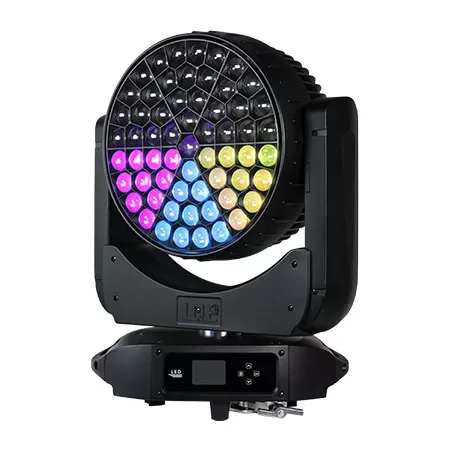
1000w 61x40w RGBW Stage Moving Head Wash Light LW1000
1000W 61x40W LED RGBW Mulichips Moving Head Wash Lights with Zoom (5°–50°), Covering Large Range and Long Distance. Designed to deliver a 5°–50° ultra-large zoom range to achieve a greater wash effect, illuminating stages and events with stunning lighting effects.
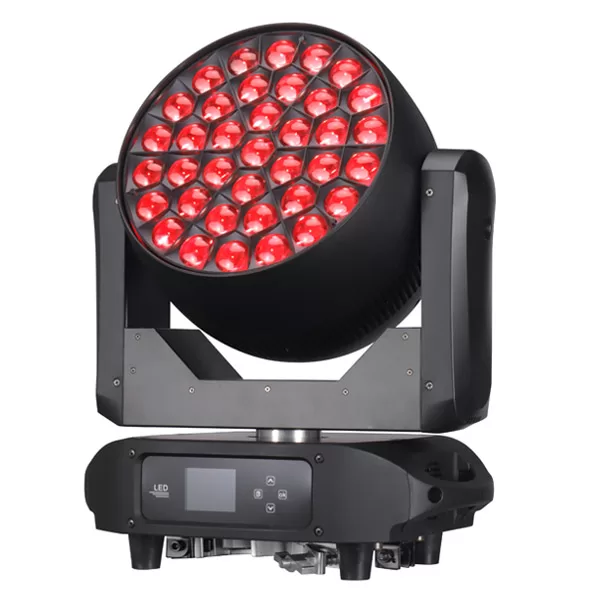
800w 37x40w RGBW Stage Moving Head Wash Light LW800
800W 37x40W LED RGBW Mulichips Moving Head Wash Lights with Zoom (5°-50°), Covering Large Range and Long Distance. Designed to deliver a 5°–50° ultra-large zoom range to achieve a greater wash effect, illuminating stages and events with stunning ring control lighting effects.

LED Moving Head Stage Wash Light LW200Z
The versatile moving head stage light provides a powerful lighting solution for theaters, concerts, and large outdoor performances. Suitable for theaters, TV stations, entertainment stages, and large outdoor performance scenes.

600w 19x40w RGBW Stage Moving Head Wash Light LW600 Zoom IP20
600W 19x40W LED RGBW Mulichips Moving Head Wash Lights with Zoom (5°–50°), Covering Large Range and Long Distance. IP20: Designed to deliver a 5°–50° ultra-large zoom range to achieve a greater wash effect, illuminating stages and events with stunning ring control lighting effects.

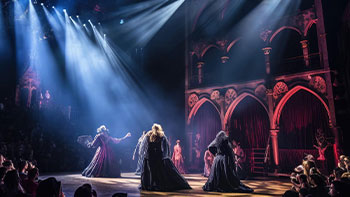
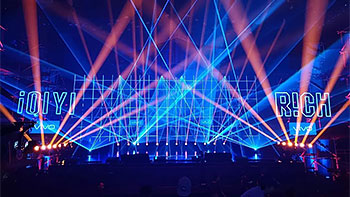

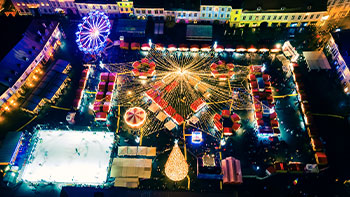








Linkedin
YouTube
Whatsapp: +8618924548390
TikTok